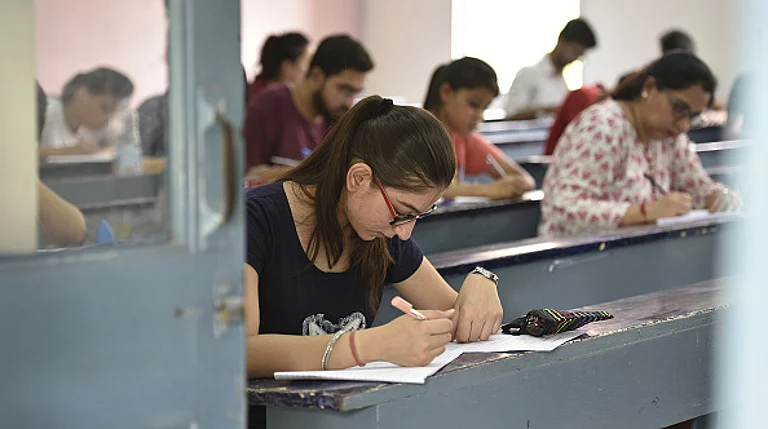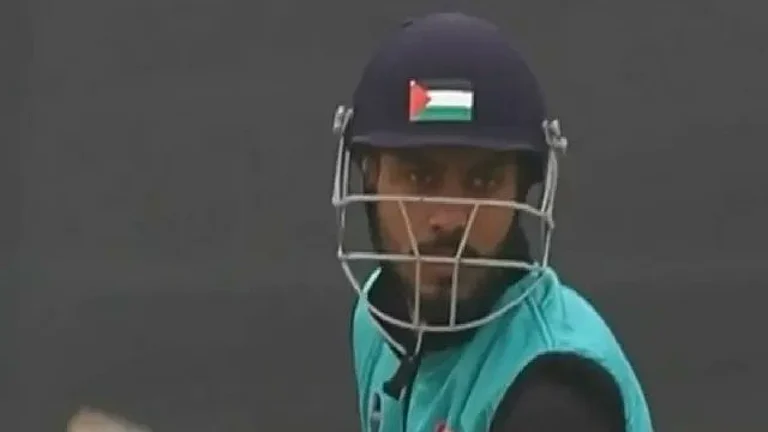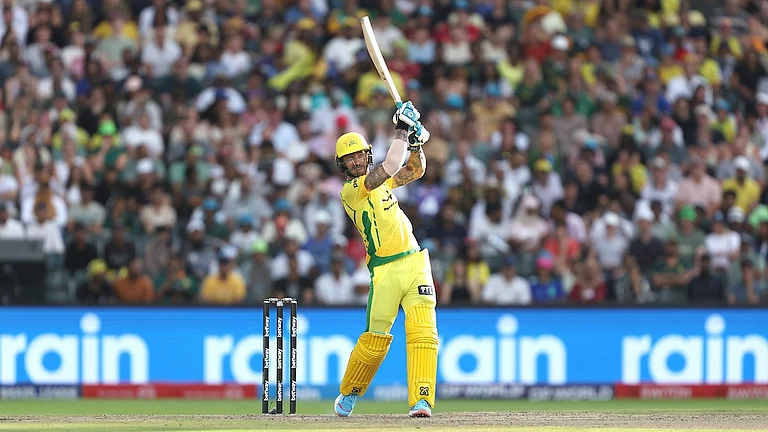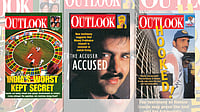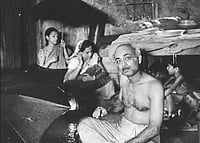From selfie booths, pop-up stalls, congratulatory posts for athletes, vaccination certificates to the usual government billboards, trains, posters and broadcast advertisements, it seems that Prime Minister Narendra Modi's face has become not only BJP's perennial electoral currency and badge of identity but an attempt at redefining personality politics and populism on the global front.
In connection with the PM selfie booths recently popping up across railway stations, an RTI response revealed that the Union government is allocating up to Rs 6.25 lakh for each permanent 3D selfie booth and Rs 1.25 lakh for each temporary booth featuring Modi's image at railway stations. The government is also spending Rs 1.62 crore on the establishment of photo booths at railway stations, facilitating the public to take selfies with images of Modi. This comes in addition to more than Rs 3,000 crores spent by the Government on publicity and advertisements since 2018.
Sharing the RTI reply on X, Congress President Mallikarjun Kharge remarked, “Self-obsessed promotion by the Modi government knows no bounds! Absolutely brazen waste of taxpayers' money by installing Modi ji’s 3D selfie points at Railway Stations.”
However, this is not a first. Earlier this month, the University Grants Commission (UGC) issued a directive to colleges to set up selfie points to highlight India’s achievements. The design recommended for the booths mentioned photos of Modi. Following an immediate row and drawing flak from administrators, stakeholders and the opposition, UGC withdrew the design. Congress, not missing any opportunity, took a dig at Modi again with Jairam Ramesh, the party’s communications in charge, reiterating on X, “Our selfie-obsessed and self-obsessed PM is so insecure in the run up to Lok Sabha polls that he’s leaving no stone unturned to save his flailing image… First, it was the Army being asked to set up selfie points. Then, he asked IAS officers and other senior govt officials to take out ‘Rath Yatras’. Now, he has directed UGC to set up selfie points in all universities.”
Despite the concern over the usage of taxpayers' money, the popular notion of the omnipresence of Modi’s face stays rooted among the lower middle class as a promise of hope and identity—like a guiding hologram. What began as a political slogan popularised by Modi during his 2019 prime ministerial campaign, 'Main Bhi Chowkidar' has now turned into this concept of the omnipresent man acting as a guardian angel of India’s values amid a rising Hindutva wave. As historian Ramachandra Guha notes on Foreign Policy, "as Hindu majoritarianism increasingly takes hold in Indian politics and society, Modi is seen as the great redeemer of Hindus and Hinduism. Reared in the hard-line Hindu chauvinist organization Rashtriya Swayamsevak Sangh (RSS), Modi frequently mocks the past rulers of India, both Muslim as well as British. He speaks of rescuing the country from ‘thousand years of slavery’ and of ushering in India’s much-delayed national and civilizational renaissance.”
Ambar Ghosh, a political analyst based in Kolkata, when asked about the crafted omnipresence of Modi's face, says, "As diffused multi-layered complex structures of politics and governance within institutional democracy make people’s connection and ability to relate to the functioning of the state difficult, the creation of an imagery of a ‘strong, effective and responsive’ leader as the face of governance delivery and political accountability makes electoral mobilisation for political parties and electorate’s ability to relate to politics more direct and focussed."
Capitalising on his image as a self-made political man, with laudable oratory skills and a decade of political success preceding his stint, Modi's face is not merely a tool for the party, but a figment of reality. "Slogans like 'Modi hai to Mumkin hai', 'Har Har Modi: Ghar Ghar Modi', and the latest one 'Modi ki guarantee' are vivid manifestations of how Modi remains the fundamental lynchpin around which BJP's electoral mobilisation strategy has been designed in the last one decade. BJP's impressive electoral successes and many surveys reveal that Modi's appeal has remained extremely popular and electorally effective," Ghosh adds.
The beginning of Modi’s personality politics can be traced back even before he became the prime minister in 2014. Modi’s rise in Gujarat, from being a head of an RSS branch in a division made up of several districts to being appointed by LK Advani to the BJP as the organisation secretary in Gujarat around the fag end of the 80s is remarkable. As an image, Modi went from being a mirror to Advani and Bajpayee’s ideas to being the face of industrialisation and development in Gujarat, completely eclipsing Congress CM Chimanbhai Patel’s role in paving the way for industrial and developmental growth in the state. Modi utilised the torrent and managed to completely morph his image over a decade.
In 2015, the Narendra Modi app was launched, which is a concise inward tour into the idea of the man and his achievements. Besides bringing a flurry of news pieces and ‘latest information’ to the consumers on the multiple yojanas that have the words Pradhan Mantri prefixed, it also reads an expansive bio and history of the prime minister. There's an over-the-top merchandise section where people can purchase t-shirts, caps, badges, magnets, wristbands and notebooks in glorification of Modi and his spate of electoral cries. A t-shirt often reads, 'NaMo Namah', a play on a Sanskrit phrase of bowing to the divine, with Narendra Modi's initials imprinted as NaMo. In line with the prevalent Hindutva atmosphere, Modi’s name then seems to also fiddle with their venerated markers of religiosity.
Further, attaching his face and name to a cricket stadium, renovated to become the largest in the world, which recently hosted the final of the ICC ODI World Cup, Modi attaches himself to a national emotion. He becomes synonymous with yet another crowning achievement, this time with the infrastructure of sports. The same goes for congratulatory posts for athletes or vaccination certificates where his face stands as a reminder for posterity – of everything socially and culturally significant that happened under his watch. “Modi tha toh mumkin hua.”
Threading in historical context when it comes to personality politics in India, Ghosh notes, "Creation of personality cult has historically been the modus operandi in India's political landscape. Indira Gandhi's personalisation of power in the 1970s and the emergence of a plethora of powerful regional leaders in Indian states like Jayalalithaa, Mamata, and Kejriwal who embodied/embodied the dominant narratives of political power revealed this deeply embedded political culture. Modi's personality cult which was initiated during the time of his chief ministership in Gujarat has been extremely craftily consolidated at the national level since 2014."
Over the years, Modi's “monk-like image” has found its footing effectively, with a grand machinery at play—be it with his comment at a rally in Moradabad, “Hum to fakir aadmi hai, jhola leke chal padenge (I am a hermit, I will exit with my little belongings)" or multiple attempts at exhibiting his fascination with yogic rituals and the simple pleasures of life on social media. Leaders like Sanjay Raut and Arvind Kejrival criticised him, pointing out the irony at play with the moniker of a ‘fakir’ when Modi publicly indulged in costly jackets, lavish properties, and security cars. Unfazed by the same, it is interesting to see how BJP appears to have harnessed the party's expenditure on modern-day technology to cement Modi’s face as an ever-present pristine emblem.
Guha further notes on Foreign Policy, "Modi’s face, and usually no other, appears on all posters, hoardings, advertisements, and websites issued by or under the aegis of the Indian government. He is thus able to use public resources to burnish his personality cult far more widely and effectively than elected autocrats elsewhere..."








